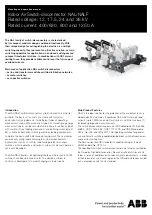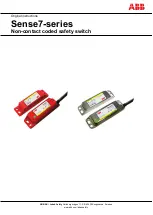
18
FSN Series • User’s Guide
NK==fåíêçÇìÅíáçå
Glossary of Switcher Terms
däçëë~êó=çÑ=pïáíÅÜÉê=qÉêãë=
The following terms and abbreviations are used throughout this guide:
•
3G
— A 3 Gbit/s serial digital 10-bit or 12-bit video interface (SMPTE 424M and
425M).
•
AUX
(Auxiliary) Bus — AUX buses are extra switching buses that allow video
signals connected to the switcher to be routed to external equipment such as
VTRs, monitors, projectors, etc.
•
Bank
— a name for the
three
combined
individual buses in an M/E, including the
PGM bus, the PST bus and the KEY bus.
•
BG
(Background) — The switcher bus on an M/E bank that selects the on-line (or
on-air) output signal.
•
Chroma Key
— A type of key where the hole-cutting information is derived from a
color rather than from a video level. An common example on television, is when
the weatherman appears to be standing in front of a map. The map itself is a
video signal, and the weatherman is in fact standing in front of a green (or blue)
screen. On the switcher, the Chroma Key process electronically subtracts the
color from the foreground image, and replaces it with video from the background
image to form a composite image.
•
Clip
,
Gain
,
Opacity
— In switcher terminology, the process of fine-tuning a key of
any type (luminance, linear, or chroma). Clipping sets the threshold for the hole-
cutting circuitry, while "gain" defines the range and sensitivity of adjustment. The
"opacity" is the transparency or density of the key, as revealed over a background.
•
Chassis Cards
— In addition to the required
M/E
and
System
cards, the
following cards that can be installed in the chassis, enabling you to configure the
switcher in many flexible ways. These cards are abbreviated as follows:
~
NIC
(Native Input Card) — provides eight native video inputs.
~
UIC
(Universal Input Card) — provides two universal scaler inputs.
~
UOC
(Universal Output Card) — provides two universal auxiliary outputs.
~
NAC
(Native Aux Output Card) — provides eight native auxiliary outputs.
~
DVE
(Digital Video Effects) — provides two “2D” DVE channels.
•
CLN
(Clean Feed) — An output of an M/E that originates upstream of the M/E’s
keyers. For example, if the output of M/E 1 is Camera 1 plus a key, the “clean”
output is Camera 1 only, minus the key.
•
Computer Video
— A generic term indicating video that originates from a
computer platform. A progressive scan signal that follows VESA (Video
Electronics Standards Association) standards, with typical resolutions of 800 x
600, 1024 x 768, 1280 x 1024, etc.
•
Crosspoint
— The video switch (or button) that selects the input required on a
particular switcher bus.
•
Cut
— an instantaneous switch from one video source to another.
•
DA
(Distribution Amplifier) — A video device that inputs one video signal, and
outputs multiple “identical” signals.
•
DSK
(Downstream Keyer) — A DSK is a key that is electronically located after all
other switcher functions — visually on top of all other layers and buses. Any
operations performed “upstream” on the switcher M/Es will not affect the
downstream key video.
















































